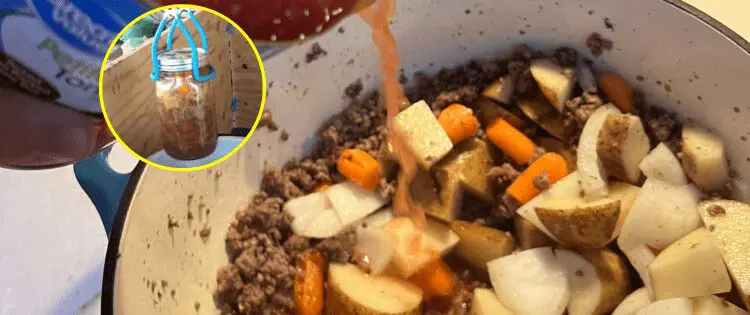Many people hold the Amish lifestyle in high regard due to its simplicity, which starkly contrasts with the modern conveniences that most of society takes for granted. The Amish people adhere to a lifestyle that abstains from these conveniences.
When it comes to food preservation, the Amish predominantly rely on canning methods. This choice is rooted in their beliefs, as some contemporary preservation techniques conflict with their values.
Over the decades, the canning process itself has remained essentially unchanged. However, today’s Amish women may use either propane-powered or generator-powered stoves, depending on the approval of their specific Community and Bishop.
In contrast to those outside the Amish community, who typically use dishwashers for jar sterilization, the Amish employ propane-powered stoves to heat water, ensuring the cleanliness and sterilization of their jars throughout the canning process.
Related: What The Amish Ate During The Great Depression
Pennsylvania, Indiana, and Ohio are home to approximately two-thirds of the Amish community, with the highest concentration residing in Holmes County, Ohio.
Having grown up just outside the Amish community, I have had the privilege of drawing inspiration for our recipe from one of my local connections within their community. In a show of support, I have sourced all the food items I’m using from their nearby variety store.
The Amish, known for their sustainable approach to farming, primarily cultivate root vegetables that are well-suited for their family needs. Root vegetables have an extended shelf life when stored in a pantry, as they are accustomed to thriving in the moist, dark earth.
Remarkably, I acquired all the vegetables required for this recipe—potatoes, carrots, and yellow onions—for a mere sum of slightly over a dollar. Additionally, I was able to procure frozen ground beef and beef bouillon for under four dollars, with the remaining ingredients consisting of a can of diced tomatoes.
Let’s get started on this awesome recipe for Amish stew.
Ingredients
- 4 small-medium potatoes
- 2 medium carrots
- 1 yellow onion
- 1 14oz can of diced tomatoes
- 2 beef bouillon cubes
- 1 tbsp garlic powder
- 1 tbsp chives
- 1 tbsp parsley
- 1lb frozen ground beef
- Dutch oven
- Pressure cooker/ Canner
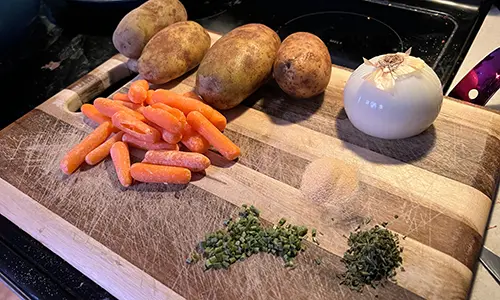
Directions:
- Turn the stove (the Amish use gas but I have an electric stove) to medium heat. We’re now going to brown our beef in the Dutch oven to create some fond on the bottom of the pot.
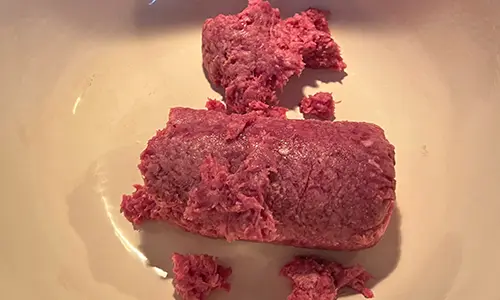
Fond is the caramelization that happens at the bottom of the pot when browning meat or vegetables. After it’s browned we’re going to drain out as much grease as we can.
- Here we’re going to add our vegetables: carrots, potatoes, onion and diced tomatoes. These veggies contain key nutrients to our diet like vitamin C, vitamin A, potassium and folate.

- We’re gonna mix our 2 beef bouillon cubes with 3 cups of hot water until they are dissolved and add it in the Dutch oven with our garlic powder, chives, and parsley.
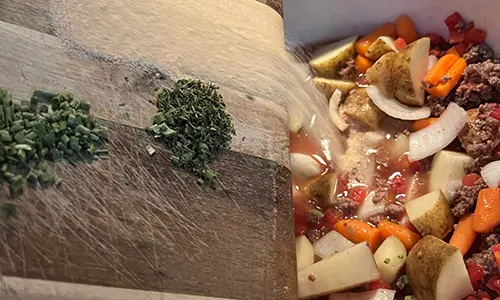
- Pull out a deck of cards to play solitaire because we’re going to turn the heat down to low and cook for 3 hours with the Dutch oven lid on to retain moisture.
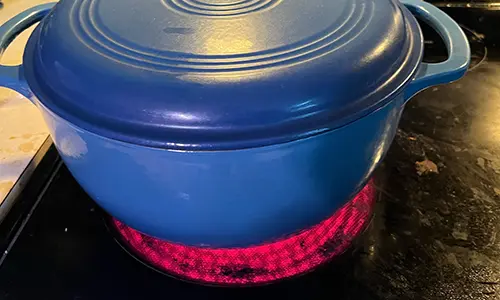
- Our Amish stew is ready to eat so serve it up with some cornbread to make sure it’s to your liking. Add salt or pepper then let’s move on to canning.
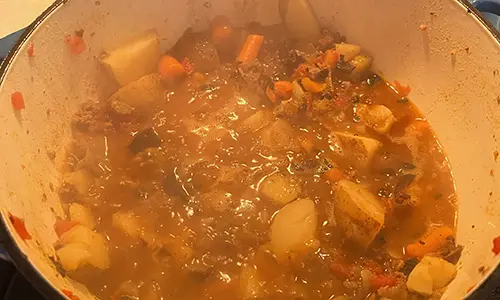
How To Can Amish Stew
We’re going to use the pressure canning method to preserve our Amish stew.
Pressure canning is the only safe method of preserving low-acid foods. Low-acid foods include vegetables, meats, fish, and poultry.
Pressurized steam creates the needed temperature of 240 degrees Fahrenheit or higher that will destroy the bacteria present in the food.
- Fill your pressure canner with 3 inches of hot water. Unlike the water bath method the jars don’t have to be fully covered. It is imperative to have adequate water level or risk damaging your pressure canner.
- Put a rack at the bottom of the pressure canner and add your jars. The stew will be hot so I recommend using jar tongs to avoid burning yourself or dropping the jars.
- Turn on the heat to high on your stove. Pop the lid of the pressure canner and tighten the seal. Once the vent starts steaming, set the timer to 10 minutes.
- When the venting period is complete, use an oven mitt to place the weighted gauge on the canner.
- Turn the stove to low heat. Process filled jars in a pressure canner at 10 pounds pressure 1 hour and 15 minutes for pints and 1 hour and 30 minutes for quarts.
- Release pressure from the pressure canner. Remove the jars carefully with jar tongs and allow the jars to cool. Check for the seal.
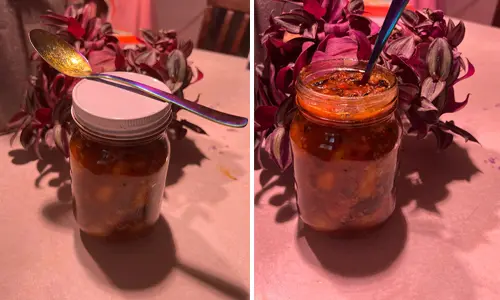
I only managed to can two jars of this recipe. My children smelled it and decided they needed to taste test the Amish Stew for control purposes. They ate most of the stew only leaving me with enough to can only two jars when this recipe makes about 6-8 quarts.
This delectable recipe has unquestionably earned a permanent spot on our dinner menu! I intend to prepare a larger batch, knowing that through pressure canning, this stew can maintain its quality for up to two years when stored in a cool, dark place.
Final Thoughts
The Amish community offers valuable lessons, whether it’s their preservation techniques or their scrumptious recipes. Their lifestyle resonates with many homesteaders.
The Amish lifestyle is marked by self-sufficiency, which means that they remain largely unaffected by external crises. This resilience aligns with the aspirations of every homesteader: to be well-prepared and self-sustaining regardless of the circumstances.
Feel free to share in the comments which other skills and aspects of the Amish community and lifestyle you’d like to learn about.
You may also like:
Amish Lessons That Prepare You For Living Off The Grid
The Succulent Red Plant That Tastes Like Bacon (Video)
Canning Mistakes Even The Most Advanced Homesteaders Make

